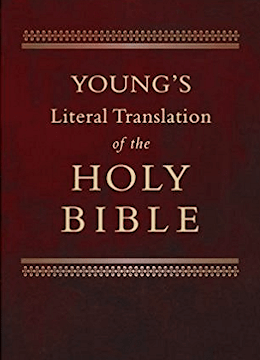Textus Receptus Bibles
Young's Literal Translation 1862
| 1:1 | That which was from the beginning, that which we have heard, that which we have seen with our eyes, that which we did behold, and our hands did handle, concerning the Word of the Life -- |
| 1:2 | and the Life was manifested, and we have seen, and do testify, and declare to you the Life, the age-during, which was with the Father, and was manifested to us -- |
| 1:3 | that which we have seen and heard declare we to you, that ye also may have fellowship with us, and our fellowship `is' with the Father, and with His Son Jesus Christ; |
| 1:4 | and these things we write to you, that your joy may be full. |
| 1:5 | And this is the message that we have heard from Him, and announce to you, that God is light, and darkness in Him is not at all; |
| 1:6 | if we may say -- `we have fellowship with Him,' and in the darkness may walk -- we lie, and do not the truth; |
| 1:7 | and if in the light we may walk, as He is in the light -- we have fellowship one with another, and the blood of Jesus Christ His Son doth cleanse us from every sin; |
| 1:8 | if we may say -- `we have not sin,' ourselves we lead astray, and the truth is not in us; |
| 1:9 | if we may confess our sins, stedfast He is and righteous that He may forgive us the sins, and may cleanse us from every unrighteousness; |
| 1:10 | if we may say -- `we have not sinned,' a liar we make Him, and His word is not in us. |

Young's Literal Translation 1862
Young's Literal Translation is a translation of the Bible into English, published in 1862. The translation was made by Robert Young, compiler of Young's Analytical Concordance to the Bible and Concise Critical Comments on the New Testament. Young used the Textus Receptus and the Majority Text as the basis for his translation. He wrote in the preface to the first edition, "It has been no part of the Translator's plan to attempt to form a New Hebrew or Greek Text--he has therefore somewhat rigidly adhered to the received ones."